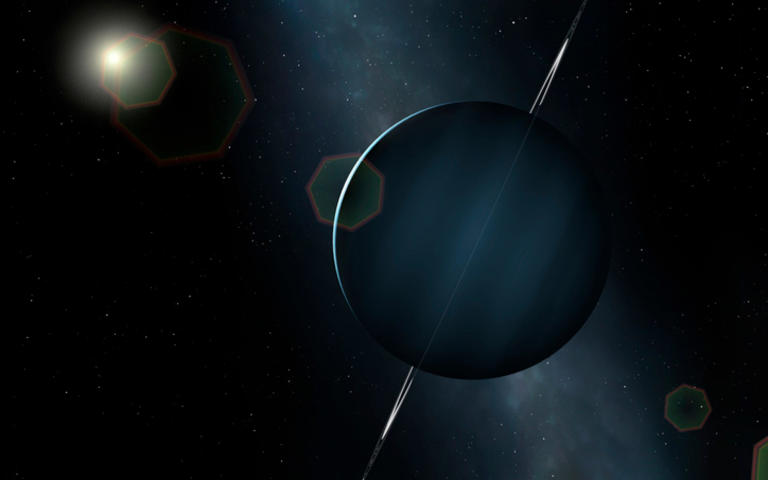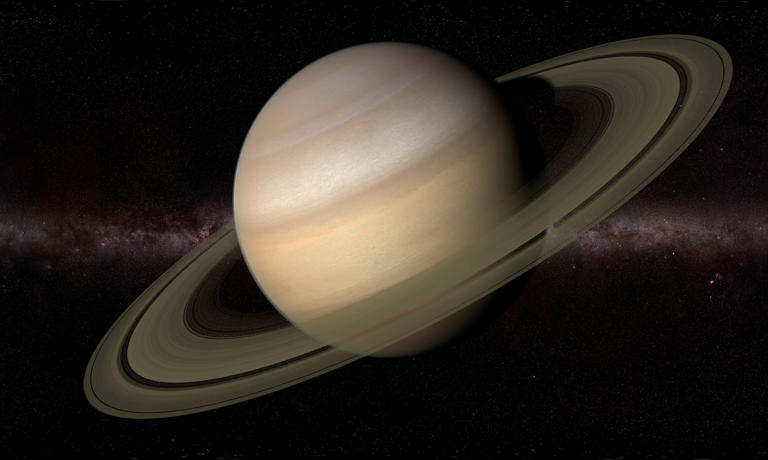Story by Anugraha Sundaravelu
Metro UK

Mercury is shrinking (Picture: Shutterstock)©
Our solar system is a strange place full of planets, moons and other objects, behaving in ways we’re yet to understand.
For example, scientists have known for a long time that Mercury, the smallest planet in our solar system, is shrinking.
Despite being the closest planet to the Sun, its interior has been cooling down and the whole planet has been contracting slightly in volume. This has led to the formation of wrinkles, or scarps, on its surface as the inside shrinks.
In total, Mercury’s radius – half its diameter – is thought to have decreased by 7km.
However, scientists have been unsure for how long this has been happening, or for how long it will last.
But a new paper, published in Nature Geoscience, suggests that although Mercury began contracting at least 3 billion years ago, significant shrinkage has occurred relatively recently.
Using data from Nasa’s Messenger Mission, Open University research student Benjamin Man and his colleagues studied the surface of the planet, paying particular attention to small, fresh landforms known as grabens.
Grabens are small strips of ground that drop down between two parallel faults in the surface, less than a kilometre wide and usually less than 100m deep.
They also do not last long, geologically speaking, due to a process known as ‘impact gardening’, in which dust, debris and other material from surface impacts would be expect to fill in and cover over the trenches.
Given their short lifespan, and the number still visible on Mercury’s surface, the team was able to determine significant shrinkage has been happening in the past 300 million years.
The BepiColombo mission, which blasted off in 2018, will soon provide more information as it starts orbiting and surveying the planet in 2026.
Until then, here are some more weird facts about our cosmological neighbourhood.
1. Uranus spins the wrong way up

Uranus is tilted almost a =t a right-angle to its orbit (Picture: Getty/Science Photo Libra)© Provided by Metro
If you thought Mercury shrinking was weird, meet Uranus, the only planet in our solar system that rotates on its side.Spinning on a tilted axis by 98 degrees, it is basically lying on its side. This is thought to have been caused by a collision with a large object early in the solar system’s history.
2. Sometimes the Moon throws rocks at us
Because the Moon pretty much lacks an atmosphere, it’s a sitting duck for asteroid and meteorite strikes – as you can see from Earth by the many craters covering its surface.
Every so often, when it is struck, chunks of the Moon fly off, and if the angle is right, they crash down to Earth.
3. Jupiter’s moons have oceans that could harbour life
Thanks to Nasa’s Galileo spacecraft, evidence of liquid oceans hidden underneath the icy surfaces of Jupiter’s moons was revealed in 1995.
This year, the European Space Agency (ESA) launched its JUpiter ICy moons Explorer (JUICE) spacecraft to explore three of Jupiter’s moons – Ganymede, Callisto and Europa.
4. Saturn isn’t the only planet with rings

Rings are more common in the solar system (Picture: Getty Images/Science Photo Libra)© Provided by Metro
While Saturn might be most popular for its rings, isn’t the only planet to have them.
Jupiter, Uranus, and Neptune all have rings, but they are much fainter and harder to see than Saturn’s rings.
5. The Sun is more massive than you can possibly imagine
It’s never that big in the sky, so it can be hard to comprehend just how big our Sun is.
Here’s something to help.
It takes eight minutes for light from the Sun to reach Earth. But it takes around 200,000 years for light to escape from the centre of the Sun to its surface.
This is because it is constantly bumped around by other particles on its 430,000 mile journey from the centre to the surface, bounding off particles and winding a wobbly path.
6. Jupiter’s Great Red Spot is shrinking

Jupiter with its cyclonic red spot (Picture: The Jovian Family © Damian Peach)© Provided by Metro
Jupiter’s Great Red Spot is a giant anticyclonic storm that has been raging for over 350 years. It is larger than the Earth, and it is so powerful that it can generate winds of up to 432 miles per hour.
However, in recent years, the Great Red Spot has been shrinking. Scientists believe that this is due to a combination of factors, including changes in Jupiter’s atmosphere and the storm’s own dynamics.
7. Mars has the largest volcano in the solar system
Olympus Mons on Mars is a shield volcano that is more than 16 miles tall and 374 miles wide.
It is the largest known volcano in the solar system, and it is over three times the height of Mount Everest.
Olympus Mons on Mars is a shield volcano that is more than 16 miles tall and 374 miles wide.
It is the largest known volcano in the solar system, and it is over three times the height of Mount Everest.
No comments:
Post a Comment